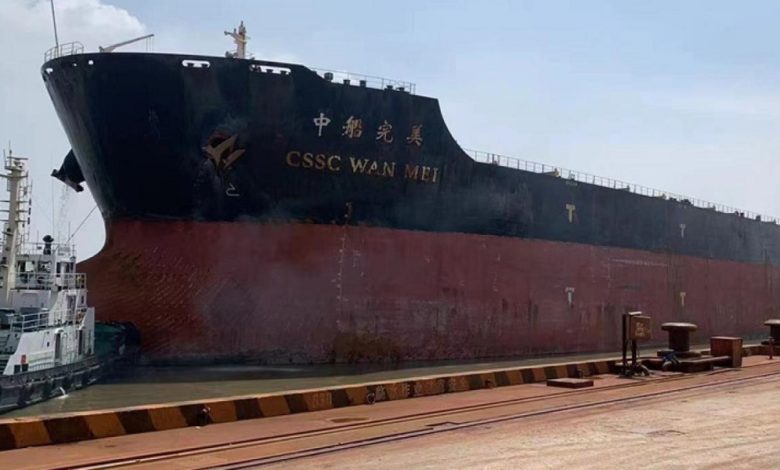Wah Kwong explores carbon capture on bulkers

Hong Kong-based owner Wah Kwong Maritime Transport has teamed up with French class society Bureau Veritas and Shanghai Qiyao Environmental Technology Co., a subsidiary of Shanghai Marine Diesel Engine Research Institute, to study the feasibility of installing carbon capture and storage (CCS) units on existing ships to meet 2030 carbon intensity indicator (CII) targets.
A cooperation agreement will see the three entities focus on two types of bulk carriers in operation in the Wah Kwong fleet. Qiyao has developed a customised design of CCS units for the Wah Kwong fleet, while Bureau Veritas reviewed the plans to ensure the safety of the vessels and equipment and that the carbon emission reduction targets are effectively achieved during the operation of the vessels.
The CCS system mainly consists of an absorption unit, a separation unit, a compression unit, a refrigeration unit and a storage unit. The main principle is that the organic amine compound solution reacts with the carbon dioxide (CO2) in the absorption unit, separating it from the rest of the exhaust gas. The dissolved carbon dioxide compound solution is desorbed at a high temperature in the separation tower before the extracted carbon dioxide is compressed, purified and cooled into liquid carbon dioxide and stored in a low-temperature storage tank, Bureau Veritas explained.
“Carbon capture, utilisation and storage (CCUS) technology captured a total of 40m tons of CO2 in 2021, according to the International Energy Agency (IEA), notably in industrial projects on shore. This makes CCUS one of the options available today that could significantly contribute to achieving carbon neutrality, as well as a promising avenue for reducing emissions from shipping,” stated Alex Gregg-Smith, senior vice president and chief executive, North Asia and China at Bureau Veritas Marine & Offshore.
The CCS concept has completed laboratory testing and has reportedly achieved a total carbon capture rate of over 85% so far. The CCS unit can be designed for different ship types and sizes, and the design approval of the unit is under review. Subsequent research work will be conducted for oil tankers.

40M tons of CO2 captured is roughly equal to about 9 hours and 40 minutes of global emissions. A thousand fold increase in the application of CCS is required, with this approach, and the “U” part of CCUS is normally utilising captured CO2 to flush out yet more oil to be burned. So, as well as re-releasing the CO2 back into the atmosphere, even more GHG potential is unlocked while doing so.
We need to fix this latter part before trying to scale up the former.